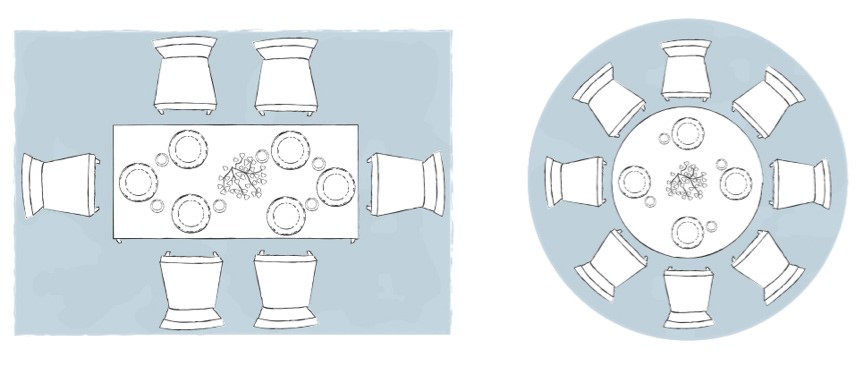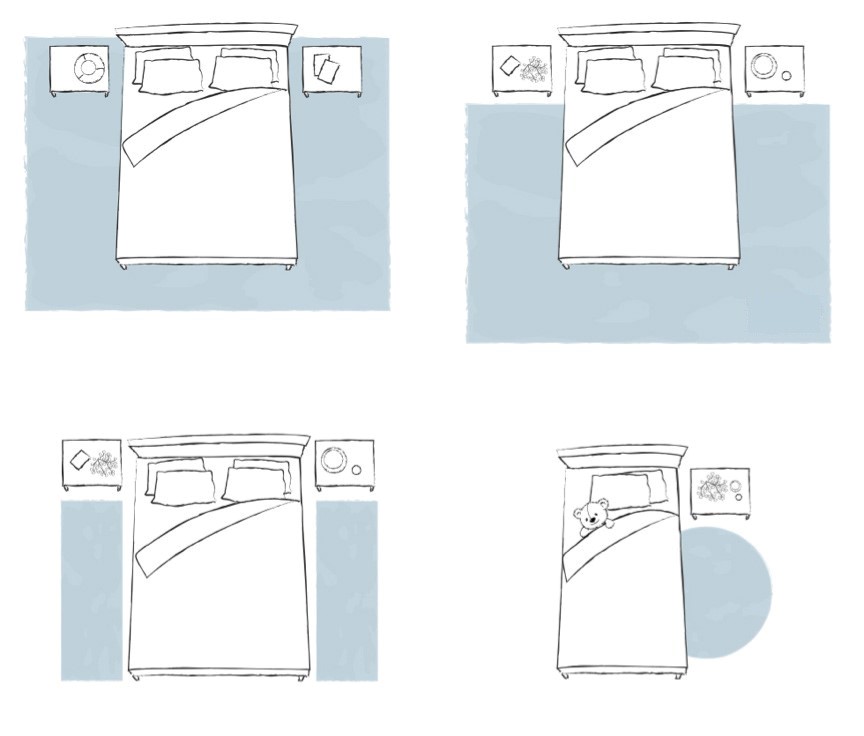Rug Size + Placement Guide
A rug can add so much to an interior, and is an extremely versatile furnishing item, as you can go either extremely bold or stay very subtle without doing too much else with other furniture/furnishings. Wool/natural fibre rugs will stay looking great for a long time if maintained well.
There are no hard or fast rules on how to position your rug, but we have created the guide below to assist you with selecting and placing the right rug for you.
SIZE
The size of a rug is vital for connecting a room and tying everything together to create a balanced space. In an open plan room, a rug can define an area and enhance a rooms overall aesthetic.
Common Rug sizes:
170 x 240cm
200 x 300cm
240 x 300cm
250 x 350cm
270 x 360cm
300 x 420cm
SHAPE
The most popular shape is rectangular for living, dining, bedrooms and narrow hallway runners.However, a round rug is a great choice in bedrooms or can add a point of interest to a living space, playroom or study.
RUG CARE- also see our Rug Cleaning & Care page
A regular vacuum* and the rotation of a rug in high traffic & sunlit areas, as well as the prompt treatment of spills, will extend the life of a rug.
*We do not recommend using rotating or brush head vacuum cleaners on our rugs if possible.
PLACEMENT SURFACES
Rugs can be placed on almost any man-made surface and work into the space well. sometimes, the rug needs a bit of help to stay in place, particularly in high-traffic areas.
We offer a range of underlay products to add comfort, durability and convenience when necessary. Please contact us for more information on underlays.
Layout Examples
Living Room Floating Layout
– For open-plan living spaces
In open plan living rooms, a rug should be big enough to fit under all four legs of each couch, sofa and arm chair. It will define the space and be in proportion with the size of furniture and surrounding space, whilst creating a relaxed and casual feel to a space.
Modular seating looks best when placed entirely on a rug with at least 20cm of rug visible behind. OR WITH a small rug, arrange the seating an even distance from it.
Classic Living Room Layout
– For separate living spaces
In rooms where furniture is up against the wall, a rug should be large enough to fit under the front legs of all lounge suite items. For a more formal look and feel, opt for the legs to be placed off the rug completely. See examples below.
Dining Room Layout
– Scale and proportion is key
For Dining rooms, a rug should always be in proportion to the table.
It is best to leave enough space on either side of the table to avoid ‘catching’ the back of the rug with a chair. The back chair legs should always be sitting on the rug, even when being used.
The rug should be approximately 1.2m-1.5m wider and longer than your table (i.e at least 65-75cm around the perimeter of the table for chairs).

Bedroom Layout
A rug in the bedroom will warm up and soften a room with hard flooring by adding colour, pattern and texture to make a room feel luxurious and cosy.
The rug should be large enough to sit underneath the bed and side tables. Another option is for the rug to sit underneath the bed, stopping short of the side tables.
For those who don’t want a large rug under the bed but still want a soft place underfoot when getting out of bed, you can opt for a set of two runners placed either side of the bed. Runners or round rugs used either side of a bed need to be close enough to be stood on straight off the bed.
If you are in any way unsure of what size rug is best for you, or how to place your rug please get in contact as we'd be happy to assist.

